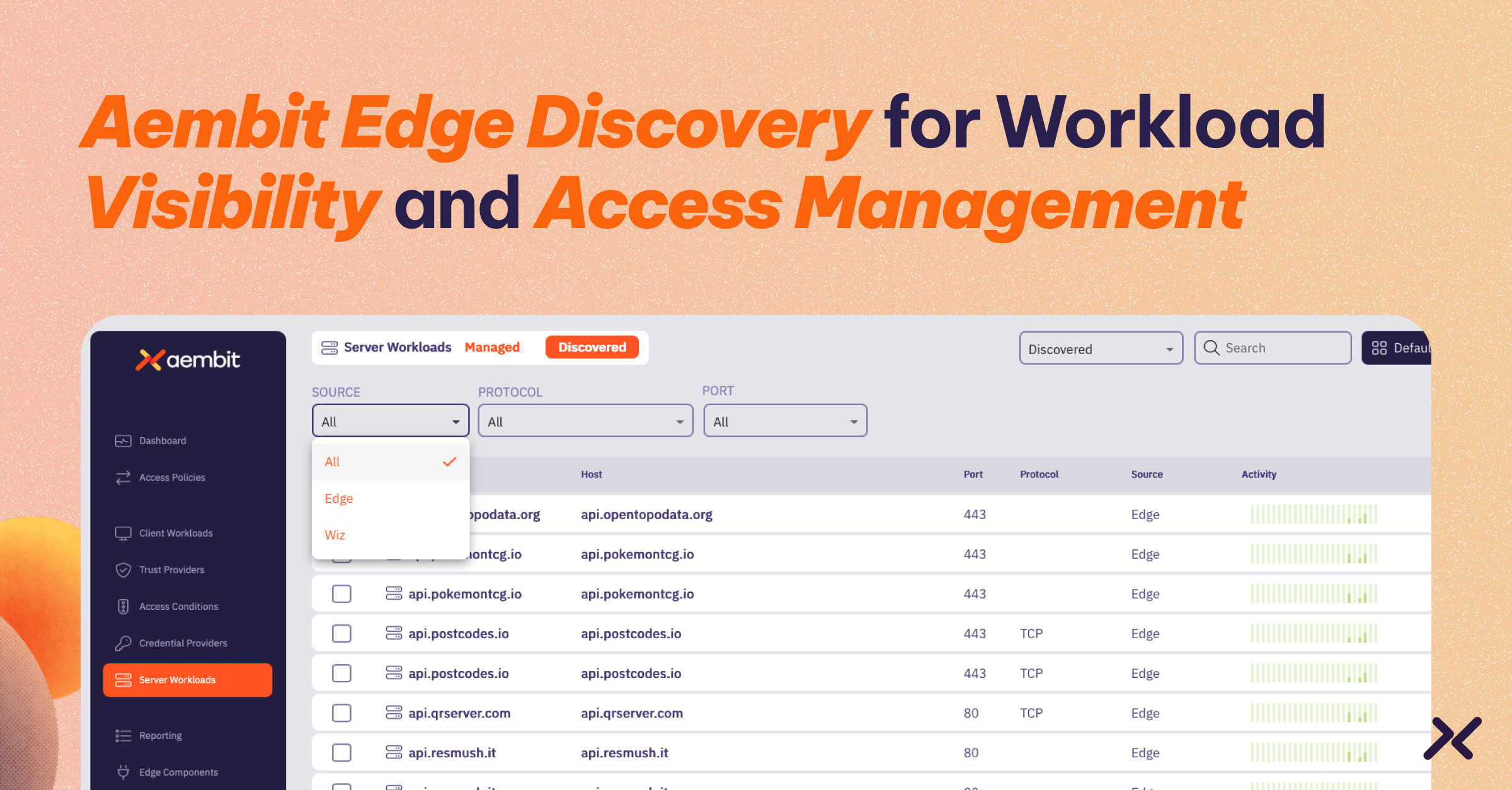Companies are increasingly diversifying their cloud portfolios for a variety of compelling reasons: reliability, cost-efficiency, and specialized capabilities, to name a few.
However, a multi-cloud strategy also brings its own set of challenges, not least of which is the complicated task of managing non-human identities (NHIs) and access across multiple service providers.
The crux of the problem? An NHI in one cloud provider likely means absolutely nothing in another. This fragmentation can pose significant challenges for DevOps and security engineers, who must contend with the intricacies of establishing secure, reliable, and consistent machine-to-machine identity and access management across disparate cloud ecosystems.
Imagine a scenario where your applications or microservices architecture in AWS are humming along perfectly, thanks to meticulously configured AWS IAM roles. But the moment you decide to expand to Microsoft Azure, Google Cloud, or any other cloud provider, including specialized SaaS or PaaS providers like Salesforce or Heroku, your AWS IAM roles become unrecognized and inapplicable in these “foreign” cloud environments.
This scenario typically compels teams to devise new IAM policies for each cloud environment they operate in, considering the distinctive services and resources each provider offers. While these new policies are essential to govern access and permissions specific to the new environment, the effort involved in configuring similar policies across multiple platforms is redundant, leading to delays in deployments, elevated operational costs, and potential risks due to discrepancies in security protocols – not to mention the heightened possibility of secrets sprawl, which intensifies in multi-cloud setups due to their diverse and decentralized nature.
In this post we’ll cover two different approaches to non-human identity mangement, specifically addressing how they adapt to a multi-cloud world.
Workload Identity Federation
One common way to tackle this challenge is through federation, often leveraging technologies like OpenID Connect (OIDC) or trust bundles to establish mutual trust between cloud environments. Federation essentially allows you to create a “roaming” identity for workloads that is recognized across multiple clouds. This means that the security policies and permissions attached to a workload in one cloud could, in theory, be accepted in another, eliminating the need to duplicate IAM configurations for each cloud provider.
However, while federation can offer a level of centralized control, they often fall short when it comes to the unique requirements for workload identities, such as support for specific schema definitions or the scaling capabilities needed for expanding workloads.
Different cloud providers may use different data schema definitions, meaning the way they organize, categorize, and manage data may vary. These variations might pose a problem when trying to manage workload identities spanning different cloud environments, as the identity attributes defined under one schema may not be interpreted or recognized the same way under a different schema.
To illustrate, let’s consider a scenario involving AWS and Azure. AWS might define an attribute related to a workload’s access permissions as “ServiceAccessLevel,” while Azure might define the equivalent attribute differently, perhaps as “WorkloadAccessTier.” These discrepancies in schema definitions create considerable challenges when managing identities across these platforms.
Now, extending this scenario to a specialized SaaS provider like Salesforce, it might not have any mapping or equivalent for the attributes defined in AWS or Azure, leading to failures or impediments when trying to use identities configured in these platforms to interact with Salesforce. There could be a lack of recognition or improper mapping of workload identity attributes, necessitating substantial adjustments and configurations to assure coherent identity and access management across different platforms.
Another issue with federation is that in modern, cloud-first environments, workloads can quickly scale up or down in response to demand, operational needs, or other factors. Traditional federation protocols thus may not be robust or flexible enough to accommodate this complexity and speed requirements.
A Modern Option: Non-Human IAM Platforms
Unlike traditional IAM solutions that are siloed within each cloud provider, non-human, or workload, IAM offers a workload identity provider with the goal of taking unified approach to managing NHIs across diverse cloud environments. It’s not about cobbling together identities from different platforms but creating a single, coherent identity framework that works across all.
How Do They Work?
A workload IAM solution typically consists of a centralized policy system that brokers and manages access rights between workloads across different environments. This system is tasked with setting, enforcing, and logging access policies, ensuring every access request is verified for client workload identity and corresponding access policy before dynamically providing a credential that is trusted by the service. To ascertain client identity, the system federates with the workload’s environment, and it also federates with the service to issue credentials on behalf of the service.
Characteristics of Workload IAM Platforms
Adaptability and Flexibility: The number of workloads and identities that you need to manage can quickly balloon with your infrastructure. Further, it’s hard to know when your developers will add new SaaS or cloud services into your workloads. As such, it’s not merely about handling sheer volume, but also addressing your entire and varied environment – and adjusting as shifts occur. A centralized workload IAM platform is inherently designed with this adaptability in mind, providing the flexibility to add new workloads or modify existing ones without having to rearchitect your IAM strategy from scratch. This not only saves time but also ensures that high security standards are maintained, regardless of the complexity or size of your operations.
Threat Management: A single, well-managed IAM platform can enforce security policies more effectively across cloud providers, limiting areas of exposure and vulnerability and helping to curtail common workload communication threats like credential exposure, unauthorized access, lack of key rotation, and weak or misconfigured authentication.
Unified Machine Identity Governance: A single dashboard eliminates the need to toggle between different cloud consoles, thereby reducing the chance of errors or oversights. Additionally, a unified view ensures that policies and access controls can be applied uniformly, making it easier to enforce consistent security measures and simplifying compliance reporting.
Auditing and Compliance: Streamlined auditing and compliance are perhaps one of the most underappreciated advantages of a centralized IAM platform. With all workload identities managed in one place, auditing becomes a less daunting task. You can quickly generate comprehensive reports that show who or what has access to which resources, simplifying both internal reviews and external compliance audits with regulations.
Secretless Approach: In a secretless configuration, applications and services do not need to manage sensitive information like API keys, tokens, or passwords. Instead, a proxy service takes on the responsibility of securely obtaining and injects credentials into validated requests.
Zero Trust: Just like for users, this approach drastically minimizes the attack surface by ensuring that only authenticated and authorized entities can interact with your sensitive workloads. Capabilities can include providing real-time posture signals to help craft “conditional access” policies.
Best Practices for Managing Non-Human Identities
What if you’re not ready for a workload IAM platform? What can you do today to securely manage workload-to-workload connections across cloud services? Here are a few practical recommendations and best practices to try, so you can manually fill the gaps that a more sophisticated workload IAM solution would automate and address by default.
Implement Consistent Role-Based Access Control (RBAC)
In a multi-cloud environment, it’s crucial to implement workload-specific RBAC roles for consistent identity and access management. Roles like “Database-ReadWrite” for database access, “API-Gateway” for API management, or “Log-Processor” for log handling can be defined. These roles centralize permissions like READ, WRITE, or EXECUTE based on each workload’s responsibilities. Once defined, these roles can be applied uniformly across various cloud providers, ensuring a cohesive and secure IAM strategy irrespective of where the workload resides.
Conduct Regular Audits and Monitoring
Most cloud providers offer native logging and auditing services – like AWS CloudTrail or Azure Monitor – that track API calls and other activities. These tools can be leveraged to perform regular checks on workload-to-workload interactions, ensuring they align with your predefined roles and permissions. Even simple scripts can be written to sift through these logs and flag anomalies or deviations from your established IAM policies.
Deploy Temporary Credentials for Short-Lived Operations
Minimize exposure to long-term credentials that can be compromised by instead instituting a policy of using temporary, time-bound credentials for operations that are short-lived or transient. This approach enhances security by reducing the window of opportunity for unauthorized access. Cloud providers typically offer mechanisms, such as AWS’ Security Token Service (STS), that can automatically rotate these temporary credentials without human intervention, further mitigating the risk of credential abuse or leakage. Make sure to align these temporary credentials with the specific roles and permissions required to maintain a principle of least privilege.
Institute User Training and Awareness
You might wonder how user education fits into a conversation about machine identities. The reality is, human errors often lead to misconfigurations or weak security postures, which can indirectly affect workload-to-workload communication. By educating your teams on the best practices of IAM, you equip them with the knowledge to set up and manage workload identities more effectively. For example, a well-trained team member would be less likely to configure overly permissive roles for an application or virtual machine, thereby reducing the risk of unauthorized access.
Conclusion
As the multi-cloud trend continues to grow, complexities associated with disparate workload identities cannot be ignored. Ready to make the move to a unified workload IAM platform today and realize the benefits of a truly integrated, multi-cloud IAM strategy? To learn more about how Aembit can help, visit aembit.io.



